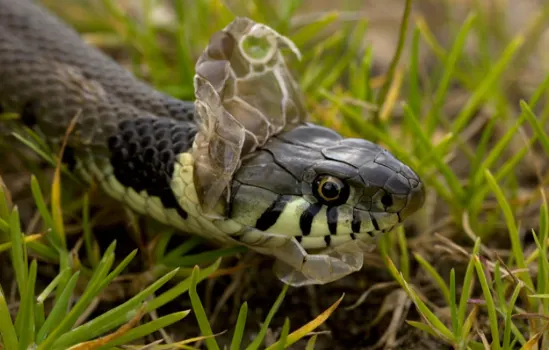Snakes, with their sleek bodies and mesmerizing movements, have long intrigued and captivated human curiosity. Yet, one of the most fascinating aspects of these creatures lies not in their appearance, but in their remarkable ability to shed their skin. The process of shedding, known as ecdysis, is a vital aspect of a snake’s life cycle, offering insights into its biology and evolutionary history.
Table of Contents
1. Growth and Renewal
The primary reason snakes shed their skin is for growth and renewal. Unlike mammals, whose skin grows with them, snakes’ skin does not stretch. As a result, they must periodically shed their old skin to accommodate their increasing size. This shedding process allows snakes to shed any damaged or worn-out skin and replace it with a new, fresh layer.

2. Removing Parasites and Pathogens
Shedding also serves as a means for snakes to rid themselves of parasites, such as ticks and mites, as well as potential pathogens. As snakes move through their environment, they can accumulate hitchhiking parasites on their skin. By shedding their old skin, snakes effectively remove these unwanted passengers, reducing the risk of infestation and infection.
3. Enhanced Sensory Perception
Snakes rely heavily on their sense of touch to navigate their surroundings and locate prey. The outer layer of their skin contains specialized sensory organs known as “labial pits” or “scale pits,” which detect heat and vibration. Shedding allows snakes to maintain the sensitivity of these sensory organs, ensuring their ability to hunt and evade predators remains sharp.
4. Escaping Predators
Shedding also plays a crucial role in helping snakes evade predators. During the shedding process, a snake’s eyes become clouded over with a milky substance, impairing its vision. As a result, snakes tend to become more reclusive and less active while shedding, reducing their vulnerability to predation. Once the old skin has been shed and their vision restored, snakes resume their normal activities.
5. Hormonal Changes
Hormonal changes within a snake’s body trigger the shedding process. As a snake prepares to shed, its skin becomes duller in color, and the outer layer begins to separate from the underlying new skin. This process is controlled by hormones such as ecdysteroids, which stimulate the shedding of the old skin and the growth of a new one.

6. Environmental Factors
Environmental factors, such as temperature and humidity, can also influence the shedding process. Snakes require adequate moisture to facilitate the shedding process effectively. Insufficient humidity can result in incomplete shedding, leading to retained shed, or “dysecdysis,” which can pose health risks for the snake. Conversely, excessively high humidity levels can promote fungal growth on the skin.
7. Cultural and Symbolic Significance
In many cultures around the world, snakes and their shedding process hold symbolic significance. Shedding is often associated with themes of renewal, transformation, and rebirth, symbolizing the shedding of the old to make way for the new. In ancient civilizations, snakes were revered as symbols of healing, wisdom, and regeneration, further emphasizing the mystical allure of their shedding behavior.
In conclusion, the shedding of skin in snakes is a fascinating and essential aspect of their biology. It serves multiple purposes, including facilitating growth, removing parasites, enhancing sensory perception, evading predators, and responding to hormonal changes and environmental cues. From a cultural and symbolic perspective, snake shedding carries deep significance, reflecting themes of renewal and transformation that resonate across human cultures and civilizations.
- Enchi Ball Python: A Unique and Stunning Morph of Python regius - March 27, 2025
- Emerald Tree Monitor: The Enigmatic Green Guardian of the Rainforest - March 26, 2025
- The Egyptian Cobra (Naja haje): A Fascinating Serpent - March 25, 2025
